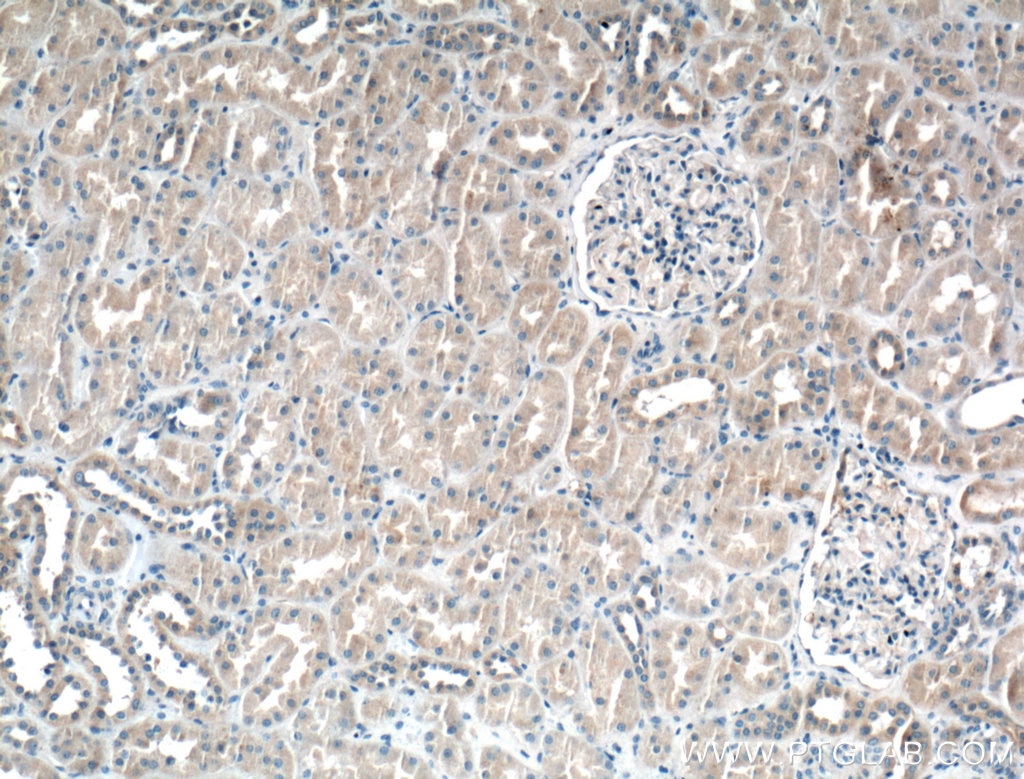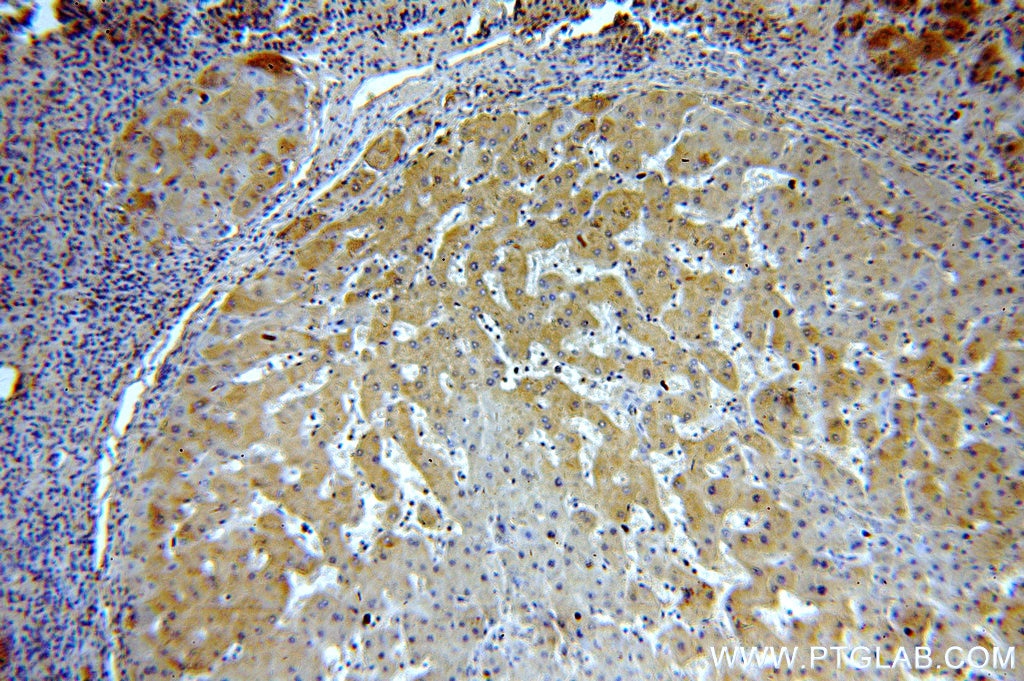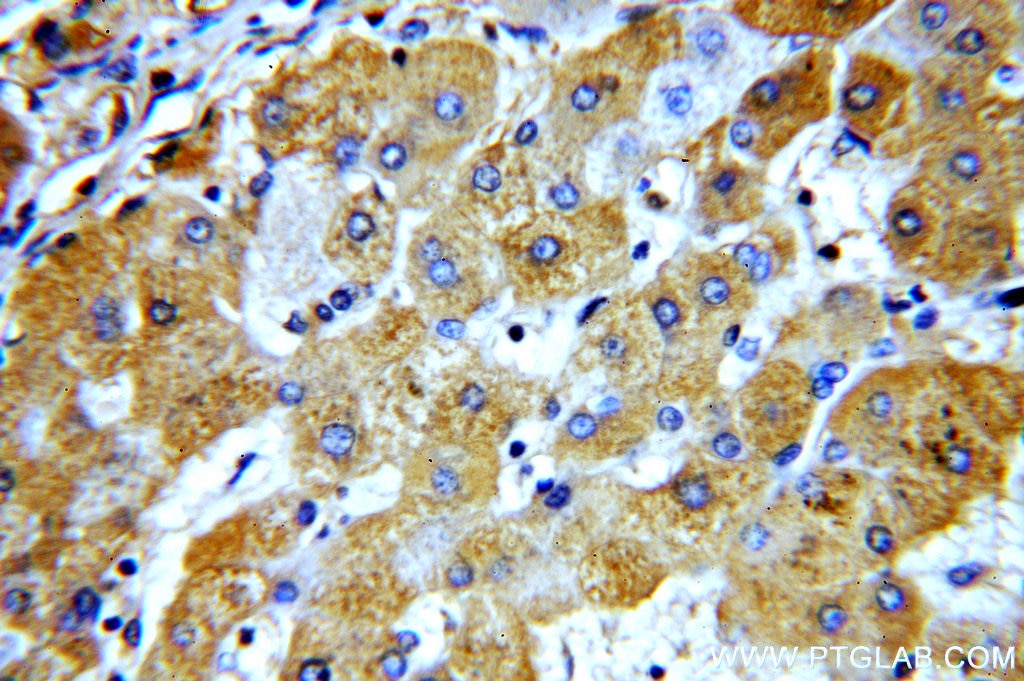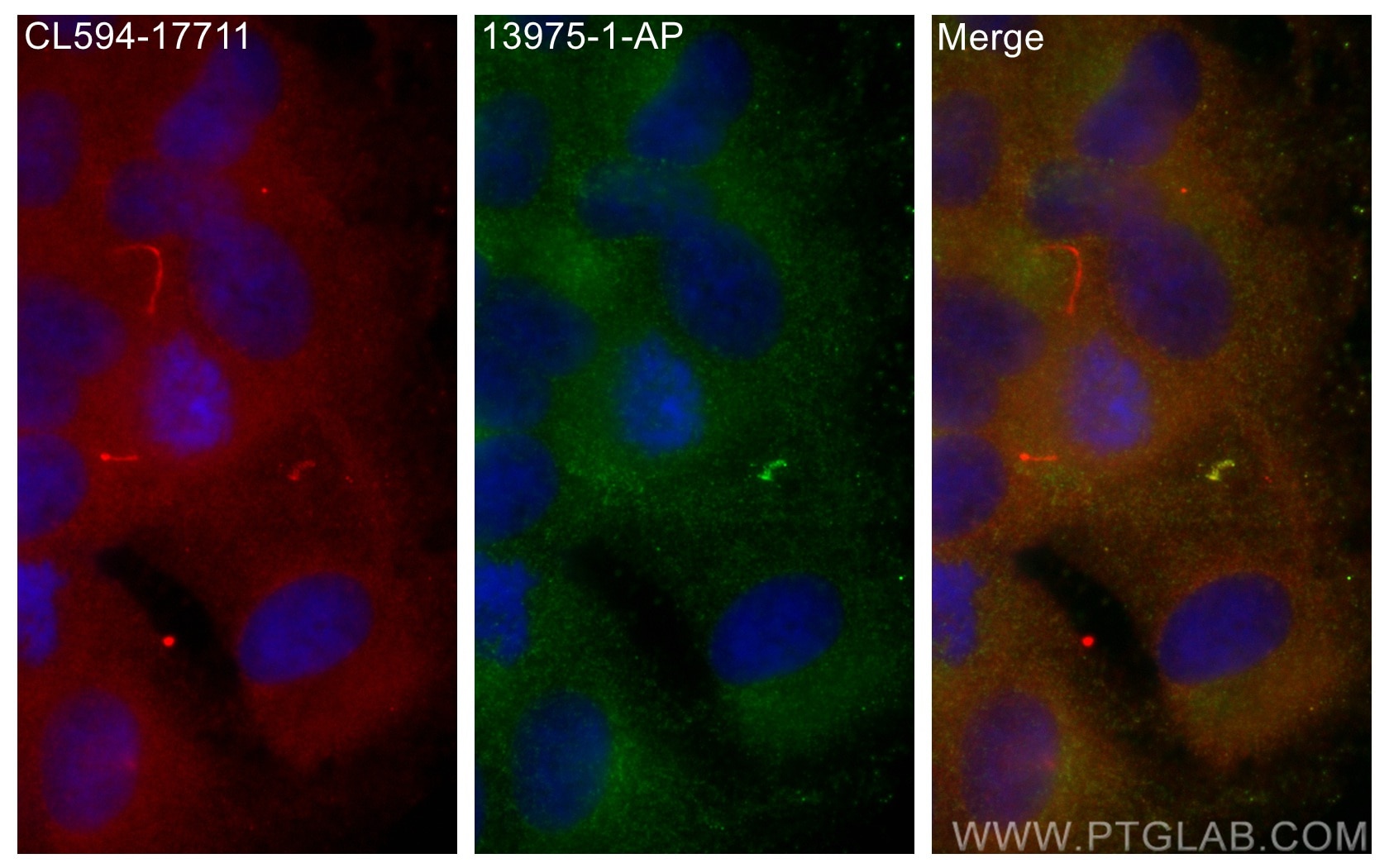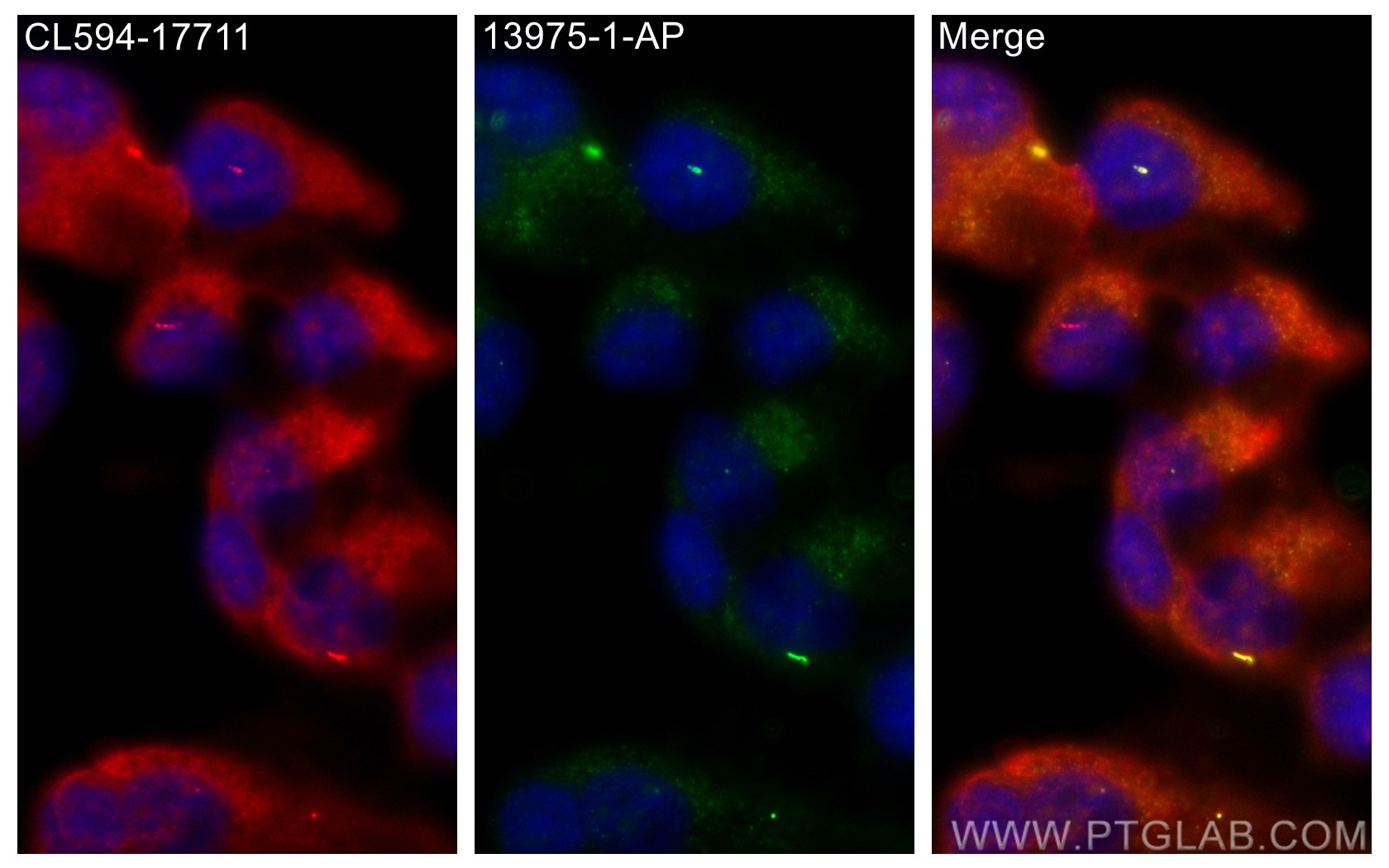Tested Applications
| Positive IHC detected in | human kidney tissue, human hepatocirrhosis tissue Note: suggested antigen retrieval with TE buffer pH 9.0; (*) Alternatively, antigen retrieval may be performed with citrate buffer pH 6.0 |
| Positive IF/ICC detected in | hTERT-RPE1 cells |
Recommended dilution
| Application | Dilution |
|---|---|
| Immunohistochemistry (IHC) | IHC : 1:50-1:500 |
| Immunofluorescence (IF)/ICC | IF/ICC : 1:50-1:500 |
| It is recommended that this reagent should be titrated in each testing system to obtain optimal results. | |
| Sample-dependent, Check data in validation data gallery. | |
Published Applications
| WB | See 6 publications below |
| IHC | See 1 publications below |
| IF | See 26 publications below |
Product Information
13975-1-AP targets MKS3 in WB, IHC, IF/ICC, ELISA applications and shows reactivity with human, mouse samples.
| Tested Reactivity | human, mouse |
| Cited Reactivity | human, mouse, zebrafish |
| Host / Isotype | Rabbit / IgG |
| Class | Polyclonal |
| Type | Antibody |
| Immunogen |
CatNo: Ag5009 Product name: Recombinant human TMEM67 protein Source: e coli.-derived, PGEX-4T Tag: GST Domain: 33-354 aa of BC032835 Sequence: FQQPEKCDNNQYFDISALSCVPCGANQRQDARGTSCVCLPGFQMISNNGGPAIICKKCPENMKGVTEDGWNCISCPSDLTAEGKCHCPIGHILVERDINGTLLSQATCELCDGNENSFMVVNALGDRCVRCEPTFVNTSRSCACSEPNILTGGLCFSSTGNFPLRRISAARYGEVGMSLTSEWFAKYLQSSAAACWVYANLTSCQALGNMCVMNMNSYDFATFDACGLFQFIFENTAGLSTVHSISFWRQNLPWLFYGDQLGLAPQVLSSTSLPTNFSFKGENQNTKLKFVAASYDIRGNFLKWQTLEGGVLQLCPDTETRL Predict reactive species |
| Full Name | transmembrane protein 67 |
| Calculated Molecular Weight | 112 kDa |
| GenBank Accession Number | BC032835 |
| Gene Symbol | MKS3 |
| Gene ID (NCBI) | 91147 |
| RRID | AB_10638441 |
| Conjugate | Unconjugated |
| Form | Liquid |
| Purification Method | Antigen affinity purification |
| UNIPROT ID | Q5HYA8 |
| Storage Buffer | PBS with 0.02% sodium azide and 50% glycerol, pH 7.3. |
| Storage Conditions | Store at -20°C. Stable for one year after shipment. Aliquoting is unnecessary for -20oC storage. 20ul sizes contain 0.1% BSA. |
Protocols
| Product Specific Protocols | |
|---|---|
| IF protocol for MKS3 antibody 13975-1-AP | Download protocol |
| IHC protocol for MKS3 antibody 13975-1-AP | Download protocol |
| Standard Protocols | |
|---|---|
| Click here to view our Standard Protocols |
Publications
| Species | Application | Title |
|---|---|---|
Nat Genet A transition zone complex regulates mammalian ciliogenesis and ciliary membrane composition. | ||
Cell The spinocerebellar ataxia-associated gene Tau tubulin kinase 2 controls the initiation of ciliogenesis. | ||
Nat Cell Biol CEP162 is an axoneme-recognition protein promoting ciliary transition zone assembly at the cilia base. | ||
Nat Cell Biol Early steps in primary cilium assembly require EHD1/EHD3-dependent ciliary vesicle formation. | ||
Nat Cell Biol Early steps in primary cilium assembly require EHD1/EHD3-dependent ciliary vesicle formation. | ||
Nat Commun Microtubule asters anchored by FSD1 control axoneme assembly and ciliogenesis. |

